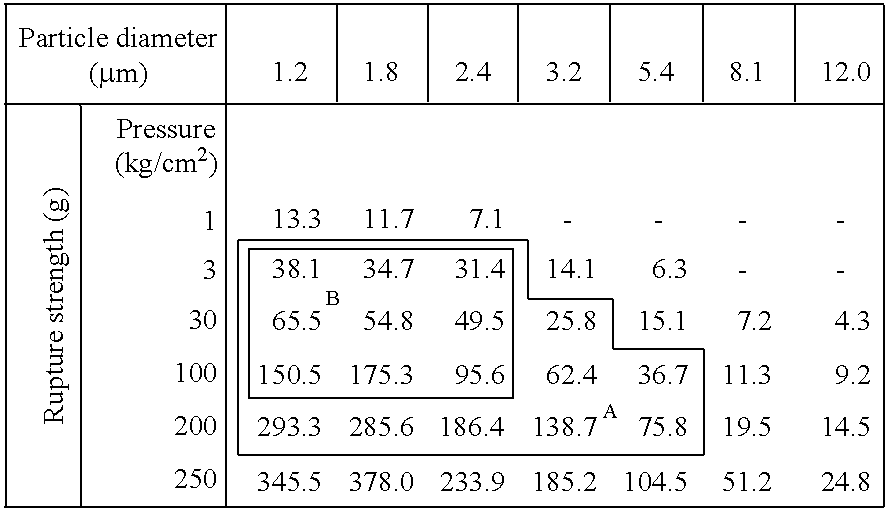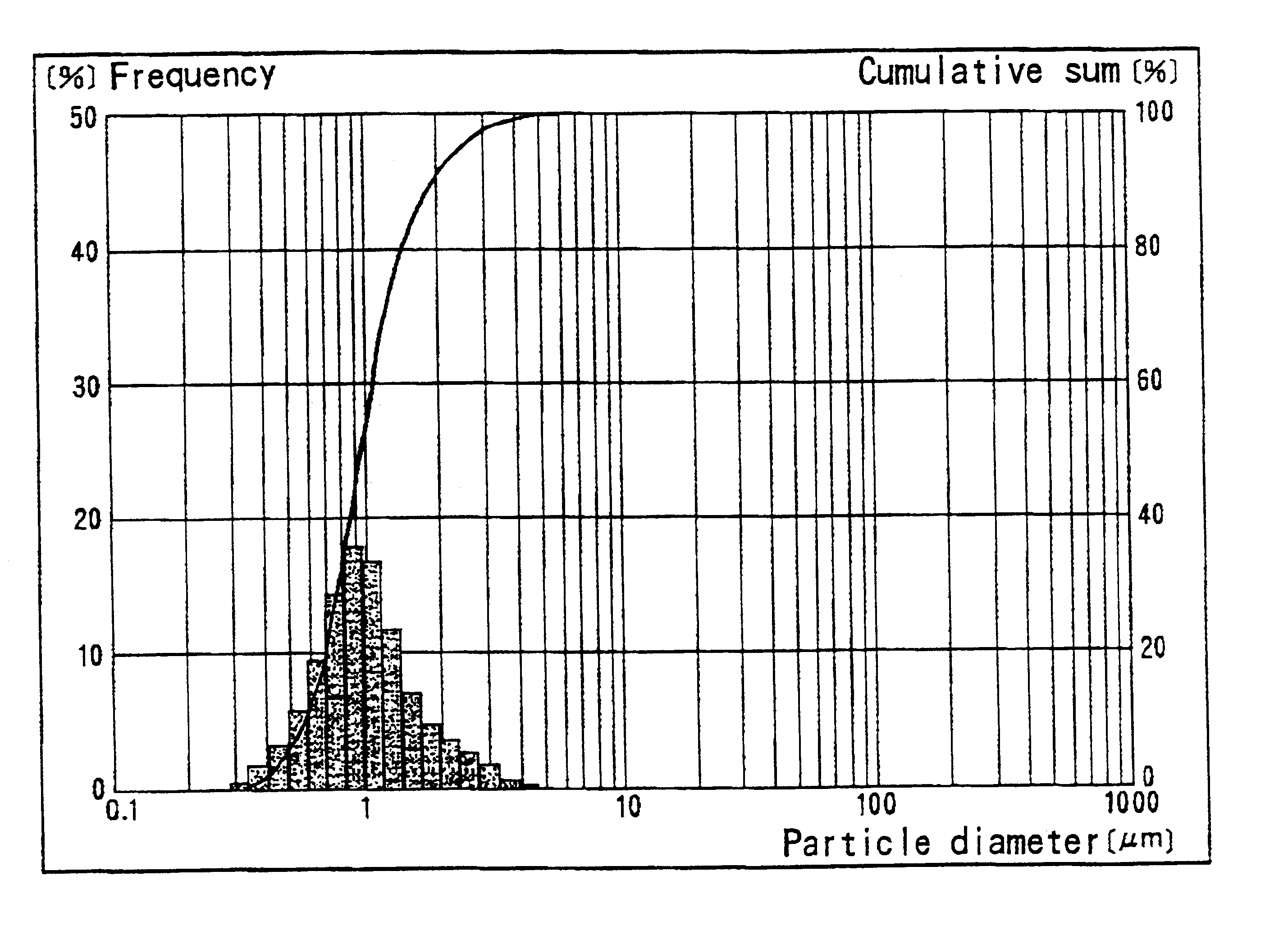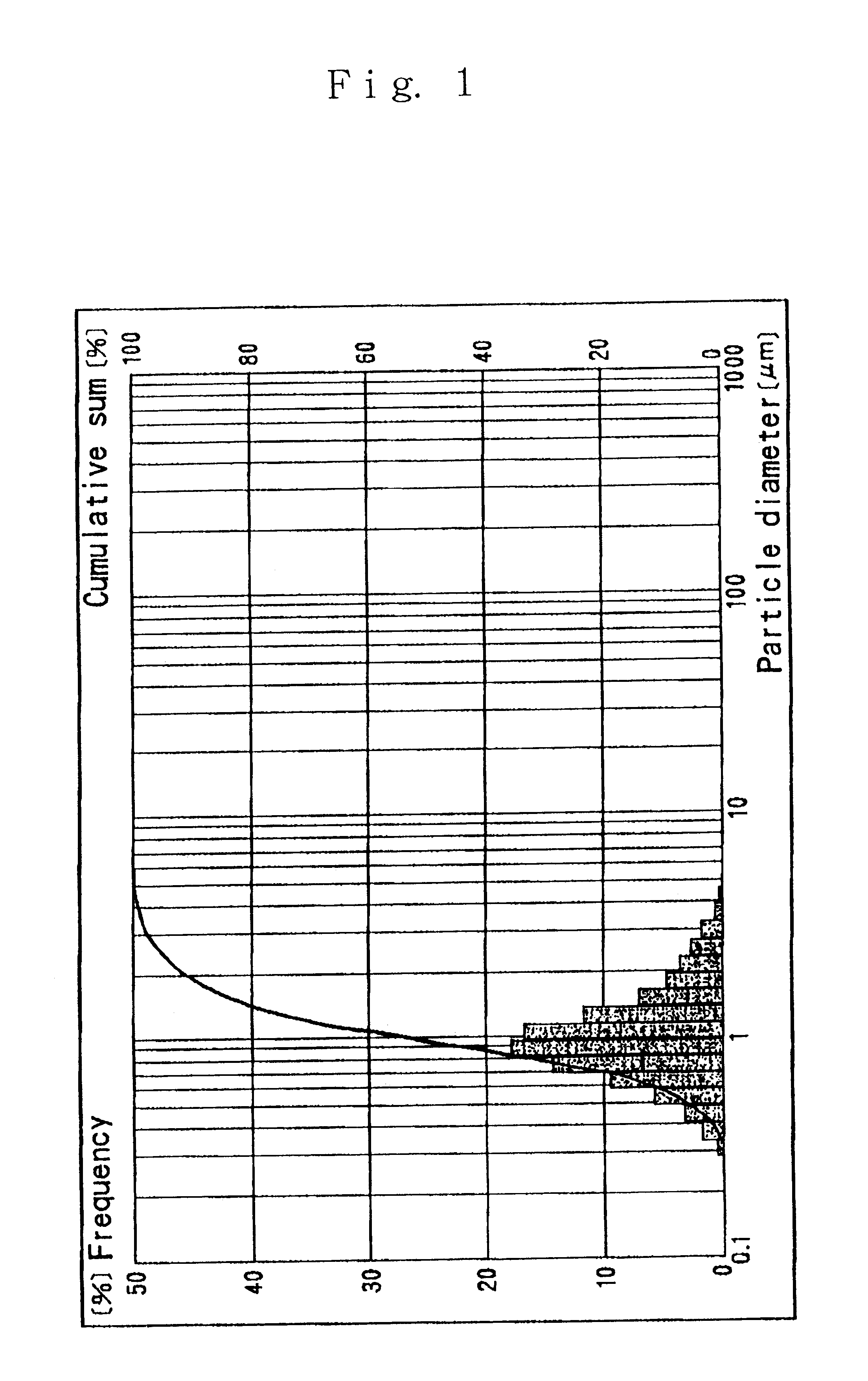Cosmetic material containing crystalline superfine silk powder
a technology of crystallized silk and powder, which is applied in the direction of body powder, hair cosmetics, impression caps, etc., can solve the problems of easy breakage of solidified substances, unsuitability for skin due to powdery properties, and degradation of touch feeling
- Summary
- Abstract
- Description
- Claims
- Application Information
AI Technical Summary
Benefits of technology
Problems solved by technology
Method used
Image
Examples
example 1
A patch test for crystalline superfine silk powder and talc powder (skin irritation)
Talc JA-46R was used as the talc powder.
The crystalline superfine silk powder obtained in Manufacturing Example 1 was used as the silk powder.
Test: With the silk and talc powder employed as specimens, the Finn-chamber was used for 20 adults (10 males and 10 females) ages 24 through 59 to affix a silk powder and talc powder to the inside portion of the arm. The skin reaction was checked after 48 hours and 72 hours in accordance with the criteria (based on "20 diagnostic clinical immunities of contact dermatitis by Shoujirou Nakagawa).
At 48 hours and 72 hours after the affixing, the affixed portion was judged by the naked eye with the results of the degree or irritation as shown in Table 6. The results were scored. The sum of the scores of the respective specimens was divided by the number of subjects and multiplied by 100 to determine the irritation factors, which are shown in Table 7.
TABLE 7
example 2
The crystalline superfine silk powder of Example 1 was used to check the skin irritation of a lipstick.
The lipstick was prepared with the ratio of ingredients shown in Table 8.
For comparison, a lipstick A, made by maker A, which does not contain silk powder was used.
These lipsticks were used to carry out the same patch test as in Example 1.
The patch test was carried out for 20 people of 14 males and 6 females, ages 26 through 63.
The test results are shown in Table 9.
It was found that the lipstick containing the crystalline superfine silk powder had no skin irritation.
Lipstick A shows skin irritation, however, this is considered to be due to the conventional extender powder contained therein.
example 3
Formability of cosmetic powder and crystalline superfine silk powder
To examine the formability of powder, a comparative test was carried out between the crystalline superfine silk powder, and Talc (JA-46R), Mica (No.5500), Titan (A-100), and Kaolin (JP-100), which are used as cosmetic extender powders.
Silk yarn of Eri silkworms was used as a material of the crystalline superfine silk powder and was subjected to the same alkali treatment as in the Manufacturing Example 1 with the composition of Table 10.
The subsequent washing in water, drying, and powdering were carried out in the same manner as in Manufacturing Example 1. The resultant powder had an average particle diameter of 1.7 .mu.m.
The rupture strengths of support beams formed by the powders as raw materials were compared to each other in terms of formability.
In the test, as shown in FIG. 5, a beam was supported at an interval of 4 cm and loaded at point A. The magnitude of the load provided at the time of rupture was measured...
PUM
| Property | Measurement | Unit |
|---|---|---|
| temperatures | aaaaa | aaaaa |
| average particle diameter | aaaaa | aaaaa |
| particle diameter | aaaaa | aaaaa |
Abstract
Description
Claims
Application Information
 Login to View More
Login to View More - R&D
- Intellectual Property
- Life Sciences
- Materials
- Tech Scout
- Unparalleled Data Quality
- Higher Quality Content
- 60% Fewer Hallucinations
Browse by: Latest US Patents, China's latest patents, Technical Efficacy Thesaurus, Application Domain, Technology Topic, Popular Technical Reports.
© 2025 PatSnap. All rights reserved.Legal|Privacy policy|Modern Slavery Act Transparency Statement|Sitemap|About US| Contact US: help@patsnap.com



